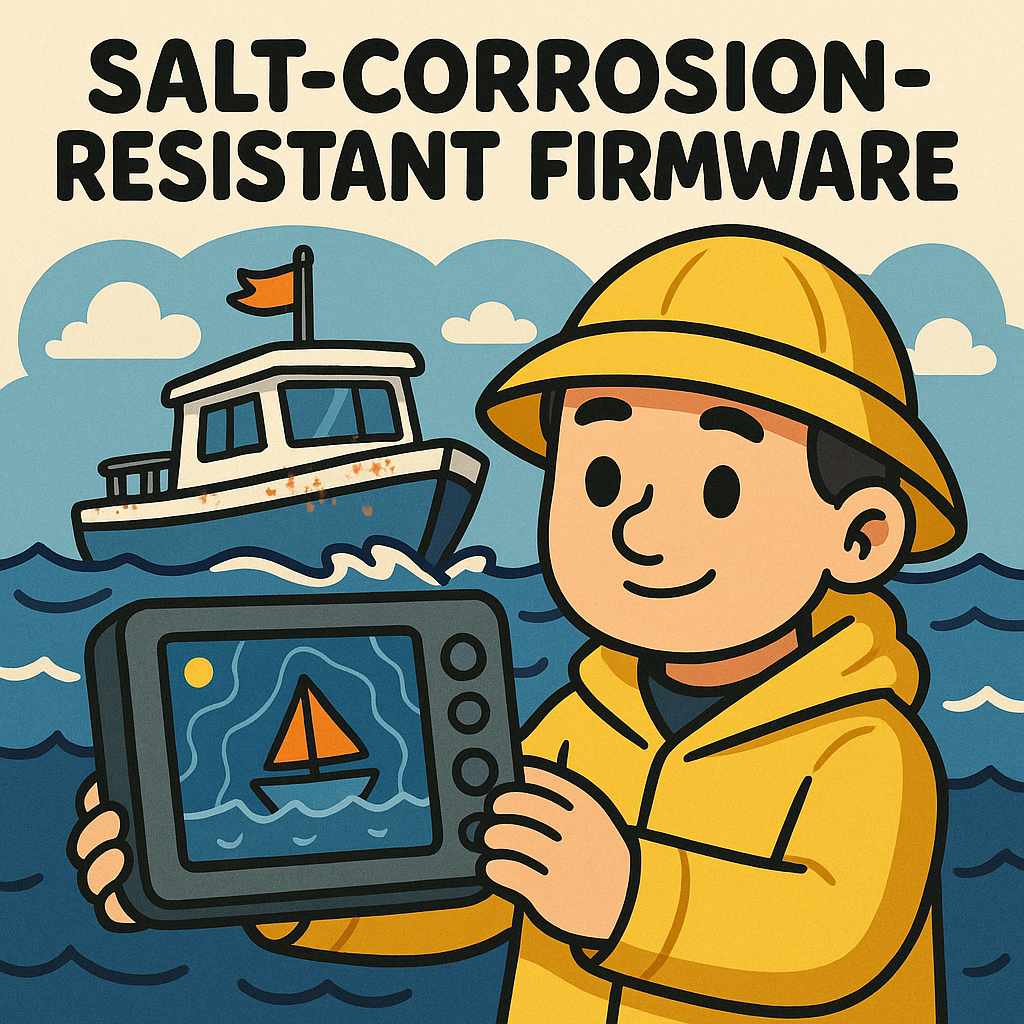Understanding the Challenges of Marine Environments
Marine navigation devices play a critical role in ensuring safety and efficiency at sea. However, these devices face unique challenges due to the harsh environmental conditions they operate in, particularly salt corrosion. Saltwater exposure can severely impact both the hardware and firmware of embedded systems, leading to failures that can compromise navigation accuracy and reliability.
Salt-Corrosion Effects on Hardware
To develop robust firmware for such systems, it is crucial to understand the physical hardware challenges posed by salt corrosion. The primary components affected include connectors, circuit boards, and sensors. Saltwater can cause galvanic corrosion, which occurs when dissimilar metals come into contact in the presence of an electrolyte, leading to degradation of critical electronic components.
To mitigate these effects, engineers often opt for corrosion-resistant materials such as stainless steel or specialized coatings for circuit boards. Using conformal coatings can provide an extra layer of protection against moisture ingress. Selecting the right materials and coatings is essential, as it directly influences the lifespan and reliability of the embedded system.
Firmware Considerations in Corrosive Environments
With a robust hardware foundation in place, the focus shifts to firmware development. The firmware must be designed to handle intermittent failures gracefully. Implementing watchdog timers can ensure that if a fault occurs, the system can reset itself without human intervention. This is particularly important in marine navigation, where loss of functionality could lead to dangerous situations.
Moreover, the firmware should include mechanisms for sensor calibration and error correction. For instance, if a sensor begins to fail due to corrosion, the firmware can utilize redundant data from other sensors or historical data trends to maintain navigation accuracy. This kind of adaptive firmware design is crucial in environments where hardware reliability is compromised.
Real-World Design Trade-offs
When designing for marine navigation devices, engineers often face trade-offs between performance, cost, and durability. For example, while using premium materials can extend the life of the device, it can also significantly drive up costs. A common approach is to target a balance where functionality is not compromised while still being cost-effective.
Another trade-off is power consumption. Many marine devices operate on limited power sources, such as batteries or solar panels. Firmware optimization becomes essential to ensure low power usage without sacrificing performance. Implementing low-power modes and optimizing algorithms for efficiency can greatly enhance the longevity of the device in the field.
Algorithm Efficiency and Data Management
Algorithms used in navigation devices must be both efficient and resilient. Filtering algorithms, such as Kalman filters, are often used to process noisy sensor data. However, these algorithms can be computationally intensive. In a resource-constrained environment, it is vital to fine-tune these algorithms to reduce their complexity while maintaining accuracy.
Additionally, data management strategies must be developed to handle the vast amount of information collected from various sensors. This may involve prioritizing data storage and transmission based on importance. For example, critical navigational data should be transmitted in real-time, while less critical data can be logged for later analysis. This approach ensures that vital information is available when needed, without overloading the system.
Testing and Validation in Marine Conditions
No amount of theoretical design can replace rigorous testing in real-world conditions. Salt fog and immersion testing are crucial steps in validating the durability of marine navigation devices. By simulating the corrosive conditions, engineers can identify potential failure points in both hardware and firmware before deployment.
Moreover, continuous monitoring of deployed systems can provide invaluable feedback. Implementing remote diagnostics capabilities allows for real-time data collection, enabling engineers to address issues proactively and refine firmware updates based on actual operational data. This iterative approach not only enhances the reliability of existing systems but also informs future designs.
Conclusion: The Path Forward
As technology advances, the demand for sophisticated marine navigation devices will only increase. The development of robust firmware capable of withstanding the challenges of salt corrosion is essential for ensuring the safety and reliability of these systems. By emphasizing the importance of hardware-software synergy, careful design decisions, and real-world testing, engineers can create resilient solutions that thrive in the harshest marine environments.



